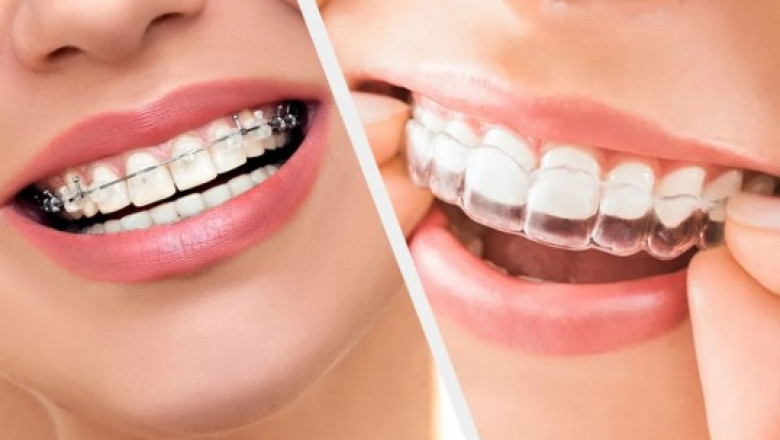views
Are you tired of covering your mouth or hesitating while smiling in pictures because of your crooked teeth? Or do you have a cavity in a tooth that is hard to get to without removing the surrounding tooth or fixing its alignment?
If so, you probably have two options: Invisalign or dental braces. But the question is which option will fix your teeth the fastest and give better results. And most importantly—which one is worth your money? Keep on reading to find out.
What is the Difference Between Invisalign and Dental Braces?
Before we jump into the treatment duration, and results, let’s get a quick understanding of both options:
Invisalign vs. Braces: Treatment Duration
One of the biggest concerns for anyone who is considering going for this type of dental treatment is how long it will take. Well, it is pretty subjective and depends on the complexity of your case. But, let us compare the average timelines:
- Invisalign: 12-18 months (sometimes it can take as little as 6 months for minor corrections)
- Braces: 18-24 months (can extend up to 3 years for complicated cases)
Different Factors that Can Affect the Treatment Time
- Severity of Misalignment: Needless to say, the more your teeth need to move to get into the correct place, the longer it will take.
- Patient Compliance: Invisalign only works if you religiously wear it for 20-22 hours a day.
- Age: Younger patients tend to see faster results because their teeth move more easily.
- Bone Structure and Genetics: Some people’s teeth just shift faster than others because of their bone structure.
- Complexity of Bite Issues: If you have a severe overbite, underbite, or crossbite, expect the treatment to take longer.
- Dentist’s Treatment Plan: A custom treatment plan by the dentist can make you see results sooner, reducing overall treatment time.
Invisalign vs. Braces: Results
Both Invisalign and dental braces are designed to straighten teeth and improve your oral health. But do they deliver the same results?
The key takeaway is that if your case is mild to moderate, Invisalign will get you results faster. But for severe misalignment? Braces might be your best bet.
Which One Should You Choose?
Again, the choice between the two depends on your problem and needs. Here are a few pointers to help you make the best decision:
- If you want a discreet, comfortable solution for mild-to-moderate misalignments and correction, go for Invisalign.
- In case you have severe alignment issues and need some serious corrections, braces might work best for you.
- If you think that putting on and removing braces every time you eat is a hassle, braces might be a better fit for you.
In the end, it ultimately depends on what your treatment plan demands. Go with the dentist’s advice and get the smile you deserve.
Bottom Line
When it comes to Invisalign vs. braces, there is no one-size-fits-all answer. It depends on your teeth, budget, and how much effort you are willing to put in. If you are looking for a fast, invisible, and comfortable option, Invisalign is the one for you. But if you need major corrections, braces are the better choice.
Frequently Asked Questions (FAQ)
Q1. Can Invisalign fix severe cases?
Not always. Invisalign usually works best for mild to moderate cases. If you have overcrowding, a crossbite, or extreme gaps, your dentist might recommend dental braces.
Q2. Which is more painful: Invisalign or braces?
Braces can be more painful because of the metal brackets and tightening process. Invisalign is generally less painful but can cause discomfort when switching aligners.
Q3. Can I switch from braces to Invisalign?
Yes! Some patients start with braces to correct major issues and switch to Invisalign for the finishing touches.














Comments
0 comment